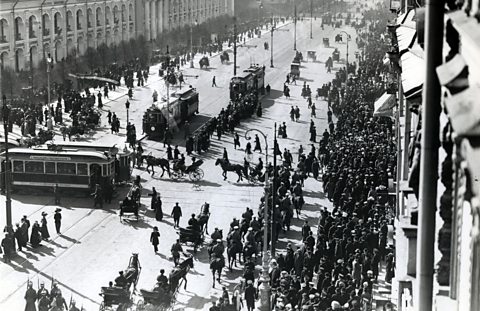Reforms of Stolypin
Agrarian reforms
Why was reform introduced?
Stolypin wanted to reform agriculture in order to modernise Russia and make it more competitive with other European powers.
He hoped that reorganising the land would increase support for the Tsar among unskilled farmhands. This would reduce the threat of the Social Revolutionaries. Stolypin believed the key to success was to increase the number of peasant landowners, which would result in a more invested peasantry.
What changed?
Redemption Payments (loans from the state) were abolished. Loans for peasants to buy land became available with the introduction of Peasants' Land Banks.
Mirs (communities of peasant farmers) could no longer stop individuals from leaving to buy private land. Mirs that did not cooperate were to be dissolved. Peasants were also given financial incentives to move to remote areas of Siberia in an attempt to open up the countryside.
What were the results of agrarian reform?
Agricultural output increased by a third, while peasant land ownership increased by 30 per cent. The number of Kadets increased dramatically and they were increasingly supportive of the Tsar.
Industrial progress
It was hoped that agrarian reform would reduce demand for labour in the countryside, hence increasing urbanisation as people flooded into the towns and cities looking for work.
Increased output
Heavy industry increased considerably. The production of iron and steel rose by 50 per cent and by the outbreak of World War One, Russia was the fourth largest producer of steel, coal and iron.
Improved conditions

The formation of trade unions had been made legal in 1905. In 1912, safety inspectors were introduced into factories. Workers began to benefit from employee insurance schemes which provided protection against accidents and illness.
However, a strike at the Lena gold fields in 1912 emphasised that there was still a great deal of discontent. Hundreds of the protesters were killed by army and police. It was clear that opposition to the Tsarist state was again on the increase.